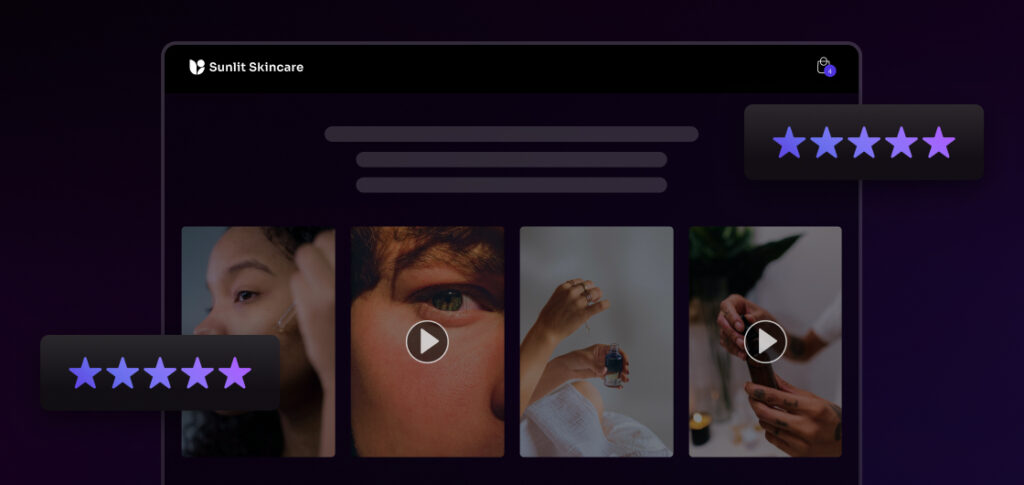
- Customer Marketing
- Reviews and UGC
- Social Proof
How To Add Social Proof on Shopify
Katie Vaught | Apr 25, 2025
Nov 13, 2023 | 11 minute read
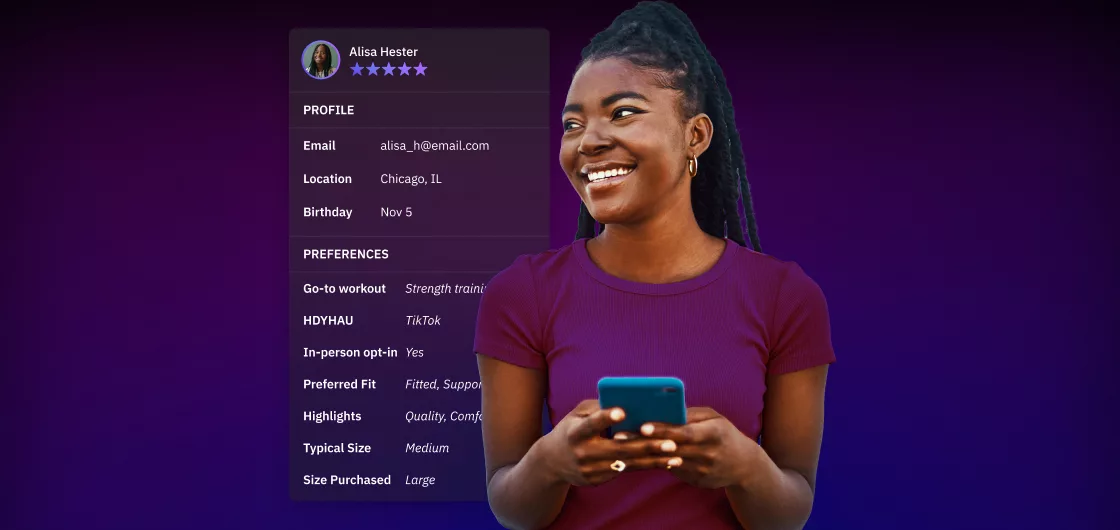
Megan Wenzl
Content Marketing Manager
Today’s retailers are competing in an era where personalization reigns supreme. But traditional avenues for acquiring customer data are becoming increasingly challenging, making it harder to craft personalized experiences for your audience.
Because data privacy concerns are mounting, governments and tech companies alike are implementing new data protection regulations aimed at tightening the reins on conventional data collection practices. As a result, retailers face a privacy-personalization paradox where their desire to deliver personalized experiences, and consumers’ needs for privacy, is creating tension.
Fortunately, a beacon of opportunity has emerged in recent years in the form of zero-party data (ZPD). Unlike third-party data, which is often gleaned without direct consent, zero-party data is willingly shared by individuals, offering a transparent and ethical path to understanding their needs, preferences, and expectations.
In this blog, we delve into the intricacies of zero-party data and its pivotal role in delivering those high-quality, personalized shopping experiences the modern consumer demands. We’ll also look at how, as customer acquisition costs rise, zero-party data is key to cultivating genuine and lasting relationships with those who matter the most — your customers.
First, though, let’s enhance our understanding of what zero-party data is and what its value is.
Zero-party data is information that customers willingly and knowingly share with your brand. Unlike first, second, and third-party data, which are typically collected unbeknownst to the consumer, zero-party data is explicitly provided by the customer with their consent.
This type of data is considered the most accurate and reliable because it comes directly from the source—the individual. It includes preferences, intentions, and personal information that users share willingly, often in exchange for personalized experiences, services, or products. Examples of zero-party data can include survey responses, feedback forms, user-generated content, and explicit opt-ins for personalized communication.
In the dynamic realm of data-driven marketing, zero-party data is a critical asset if you’re seeking to revolutionize your approach to customer engagement. Some key reasons why you should prioritize zero-party data include:
In essence, zero-party data isn’t just a collection of information; it’s a strategic imperative for brands looking to forge meaningful connections, prioritize user privacy, and stay at the forefront of personalized customer experiences.
As Annette Snow, Director of Business Development and Strategic Alliances at The Snow Agency, says, “It is important for brands to focus on zero-party data because that is feedback from your customers directly. This freely allows your customer to connect with your brand directly and gives you the most accurate data. There is no questioning how the data was collected and you’re hearing first-hand what the customers think and what they want. This allows you to confidently apply changes that will make an impact.”
Now that you know why you should be using zero-party data, you’re ready to explore innovative and customer-centric methods to simplify collection. Here are some effective strategies to collect valuable zero-party data:
As willing as they are to return items that aren’t a fit (in every sense of the word), ideally, shoppers will love every product they purchase. Because of this, it can be hard to instill enough confidence in them to pull the trigger and provide their credit card details.
This is why personalized quizzes are so effective. Not only are they a great way to gather zero-party data, but they also drive conversions, sales, and repeat purchases. Just ask luxury bedding company, Bed Threads, who saw an immediate impact of a 15% conversion rate and 52x increase in ROI after implementing Okendo Quizzes.
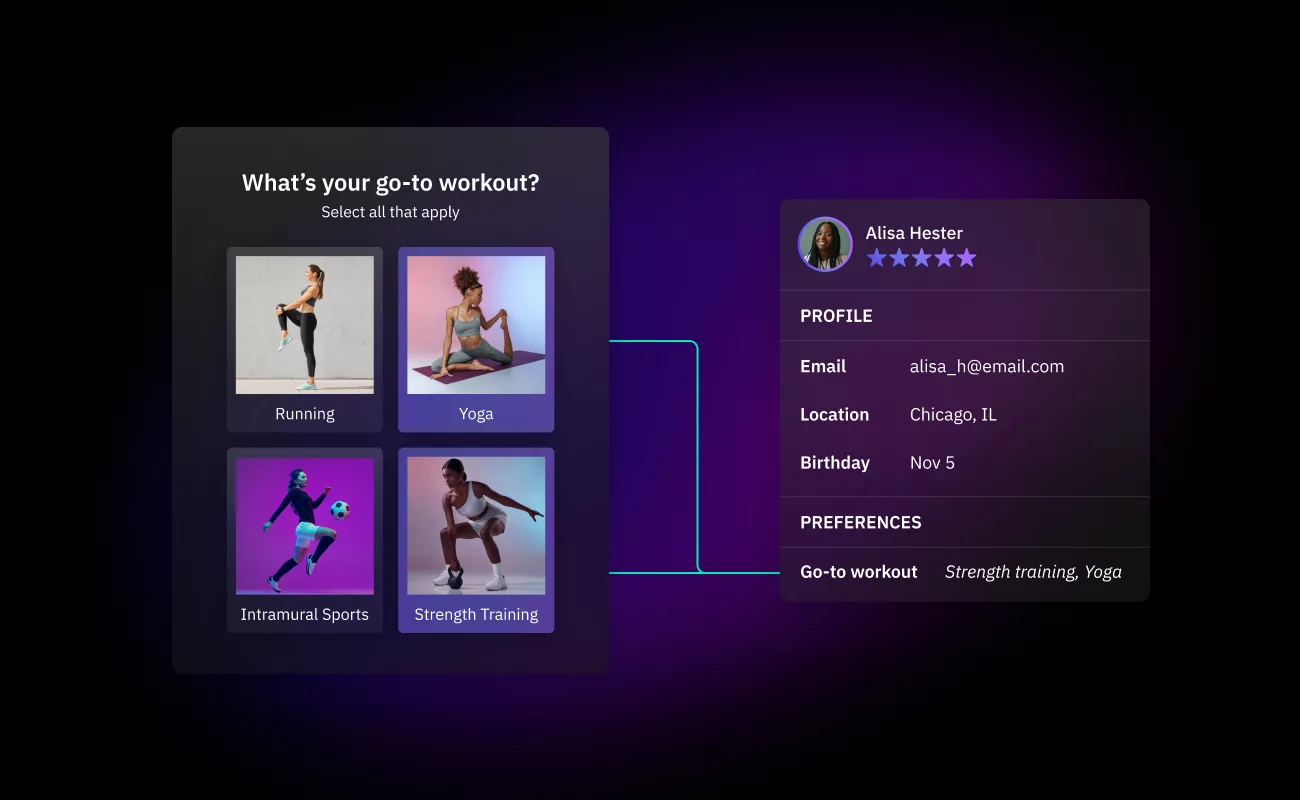
Product recommendation quizzes, in particular, are highly effective at not only engaging your shoppers, but providing personalized suggestions based on user responses. These quizzes guide shoppers through a series of questions to collect their preferences, requirements, behaviors, and demographics. Then, they match the shopper with products that best align with their profiles.
Quizzes can come in many forms, however, and range from the very intentional (“Discover which of our dishwashers is right for your family by answering these five quick questions…”) to the more general (“Cozy, Chic or Cottagecore – take our quick quiz to define your Fall style!”). Chief Nutrition excels in the former approach, guiding users through quizzes that seek to understand their dietary preferences, and ultimately result in tailored nutrition recommendations.
When well-designed, quizzes can be a goldmine for zero-party data and the fuel you need to personalize your offerings.
Surveys are a powerful tool for brands seeking in-depth insights into customer preferences and experiences. When strategically deployed, surveys become more than just a data collection method—they transform into a means of fostering a deeper understanding of your audience.
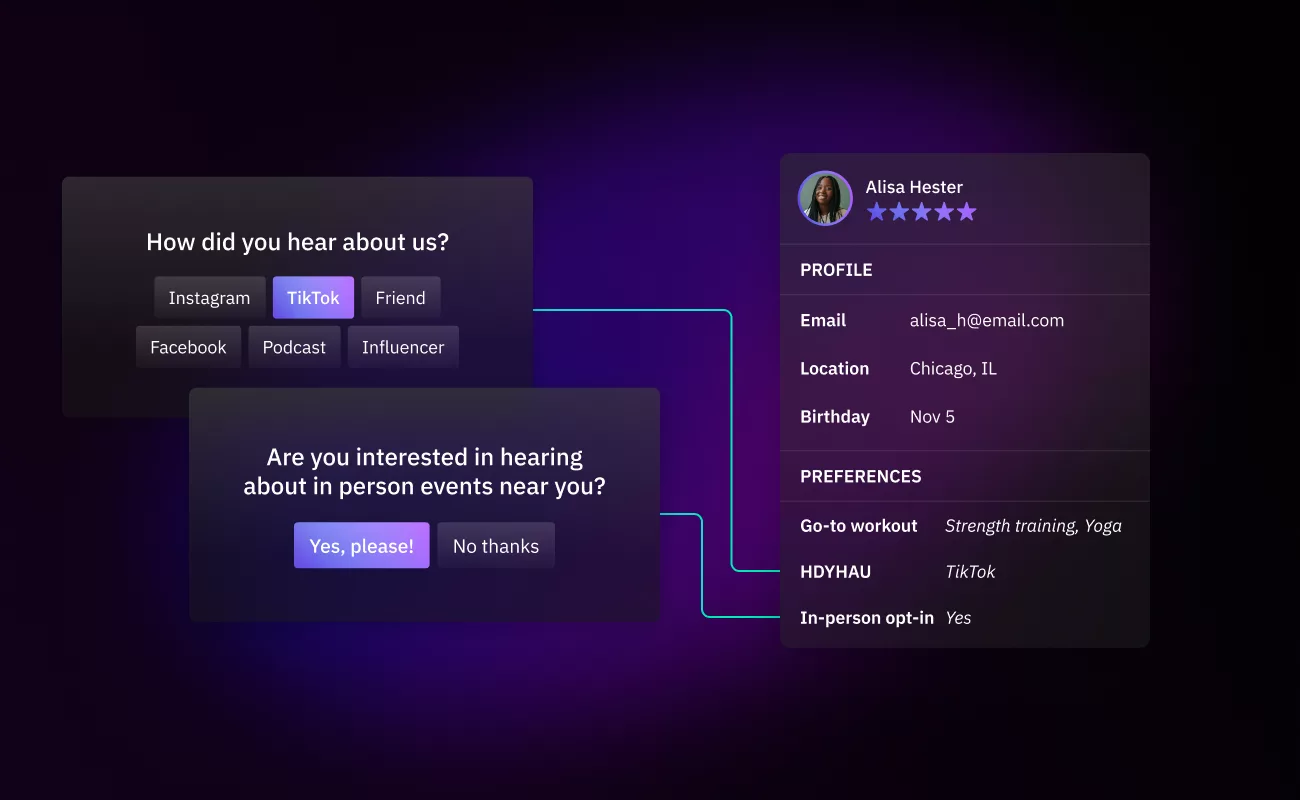
But the success of surveys lies in careful design and consideration of the customer experience. This means being deliberate with how and when you deliver a survey. Here’s a breakdown of some effective survey strategies, with a focus on enhancing the overall customer experience:
Micro-surveys, strategically placed during high-engagement moments, can yield valuable insights without overwhelming the customer. Post-purchase or following a positive customer review are opportune moments to deploy these concise surveys. By keeping questions brief and relevant to the customer’s recent interaction, brands can capture immediate feedback while respecting the customer’s time.
Leveraging email and SMS channels for survey distribution ensures a seamless and non-intrusive interaction with customers. Embedding shareable survey links in these messages makes participation effortless. By reaching customers through their preferred communication channels, brands demonstrate a commitment to meeting customers where they are and respecting their communication preferences.
Including Net Promoter Score (NPS) surveys in your arsenal provides a direct measure of customer loyalty and satisfaction. The NPS question, asking customers to rate the likelihood of recommending your brand, offers a straightforward metric for understanding overall customer sentiment. This valuable data can guide strategic decisions and highlight areas for improvement in the customer experience.
Similarly, it’s crucial to understand how customers discovered your brand so you can optimize your marketing efforts. The “How Did You Hear About Us?” (HDYHAU) survey is an effective tool for collecting data on customer acquisition channels. By identifying the most impactful touchpoints, brands can allocate resources more efficiently and enhance their presence on the most effective platforms.
Surveys play a pivotal role in enriching customer profiles by encouraging users to share additional information about their preferences, habits, and expectations. Brands can strategically gather details that contribute to a more comprehensive and nuanced understanding of their customers. This process of profile completion goes beyond basic demographic information, delving into specific interests and behaviors. For example, a jeweler might ask a shopper what type of jewelry they wear most often.
Customer reviews are a source of valuable insights, shedding light on the unique characteristics of your customer base. When you’re armed with this knowledge, you can segment your customers for more targeted and personalized communications.
Reviews allow you to get to know your customers on a more personal level, especially when you utilize the Attributes feature on Okendo’s Customer Marketing Platform. This feature enables your customers to add specific additional information relating to their demographics, lifestyle and behavior to the reviews they submit.
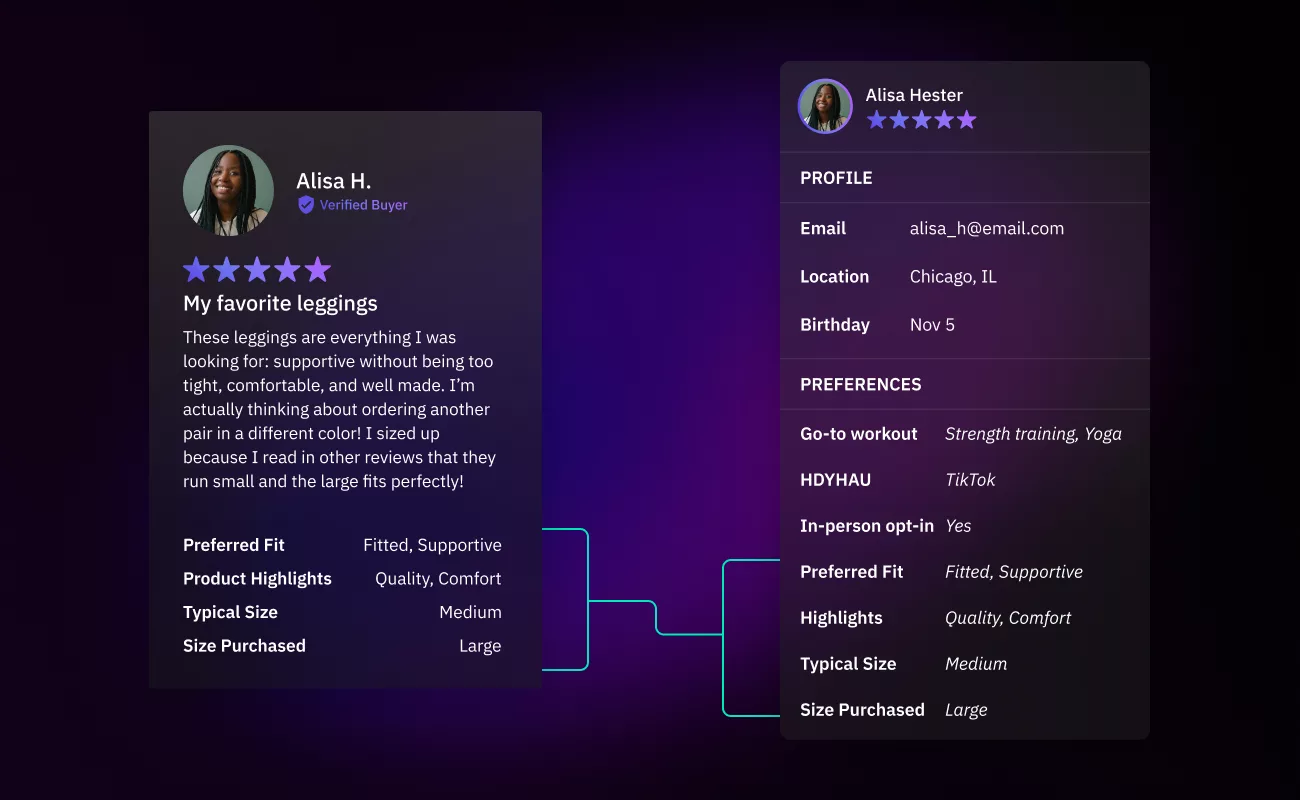
Imagine a customer providing feedback on a new fitness app and including their fitness goals and preferred workout routines in the review. Similarly, a review for a gourmet coffee brand might feature details about the reviewer’s coffee brewing preferences. Platforms like Okendo transform reviews into a reservoir of nuanced information, helping shoppers in their decision-making process while granting brands the ability to finely segment their audience for tailored interactions.
Harnessing zero-party data isn’t just about collecting information; it’s about strategically leveraging that data to enhance customer experiences and drive business success. Here are examples illustrating how brands can effectively use zero-party data to optimize the customer experience and personalize their interactions:
Soylent, a pioneer in meal replacement products, turned to zero-party data to shape its product strategy. By directly asking customers about their flavor preferences, Soylent sought to introduce new options. Interestingly, when one survey asked customers, “What flavor would you like to see from Soylent?”, the Soylent team found none of the flavors they thought would be popular resonated with customers. This critical insight not only saved the brand from potential product flops but also guided them toward flavors that better aligned with customer preferences, showcasing the importance of zero-party data in steering product innovation.
Slate Milk, the maker of high-protein, lactose-free chocolate milks and lattes, integrated zero-party data into its strategy with a focus on customer attributes. Customers could specify their favorite flavor of Slate milk when reviewing the brands’ variety pack. This zero-party data allowed Slate Milk to segment its email flows based on customers’ flavor preferences. Subsequently, the brand could tailor communications, promotions, and product recommendations, ensuring a more personalized and resonant engagement with each customer.
“These updated flows have made it incredibly easy to offer relevant content to the right customer at the right time,” said Ron Lubin, Sr. Marketing Manager at Slate Milk. “This is particularly useful for flows where the customer purchased a variety pack and then tells us their favorite flavor of the pack.”
“Now when we reach out to customers to inquire about a second purchase or a potential subscription, the data we get from those follow-up emails can be used to engage with customers in more relevant and personalized ways.”
Zero-party data plays a pivotal role in personalized communication. Imagine you’re an apparel brand that hosts yoga events across the country. By understanding customers’ interests and preferences, you can target specific customer segments with tailored event invitations. For instance, if you know a group of customers are interested in yoga, it can send them specific communications about upcoming yoga classes in their city, creating a more meaningful connection.
Leveraging zero-party data, you can also educate customers with targeted content. For instance, a haircare brand could provide content on how to take care of hair in different seasons, understanding that customers might face specific challenges during winter or summer. This educational approach not only adds value to the customer but also showcases your brand’s commitment to addressing individual needs.
Zero-party data is a goldmine for upselling and recommending personalized products. Taking the hair care example further, a brand could use this data to recommend specific products suitable for winter hair care. Similarly, an outdoor gear brand might suggest winter-friendly shoes based on the customer’s location and activities, creating a personalized shopping experience.
These examples underscore the versatility of zero-party data in shaping product strategies, refining communications, and providing customers with personalized experiences that extend beyond mere transactions. By embracing the insights derived from zero-party data, your brand can forge deeper connections, drive customer loyalty, and ultimately thrive in a landscape where personalization is paramount.
As we navigate the evolving landscape of data-driven marketing, zero-party data is proving to be a catalyst for customer-centricity. By respecting customer privacy and actively involving them in shaping their experiences, brands not only glean critical insights but also solidify the foundation of loyalty.
Now that you understand the impact of zero-party data, consider using the above guide to update your flows and campaigns so they engage your target audience and speak to them on a more personal level.
To learn more about how Okendo’s Customer Marketing Platform can help gather and leverage zero-party data for your marketing campaigns.
Related articles
Ready to learn more?